The church Holy-Cross of Gannat
 The
traces the oldest discoveries with Gannat go up to a few twenty-three
million years. They take us along on the track of the brachypothères,
in other words rhinoceroses of the end of the Oligocene one.
The
traces the oldest discoveries with Gannat go up to a few twenty-three
million years. They take us along on the track of the brachypothères,
in other words rhinoceroses of the end of the Oligocene one.
Gannat seems to have been a true cemetery for these animals, so that one discovers multitudes of fossilized bones.
The
motorway building sites on the territory gannatois made it possible to
discover several industries on quartz rollers which would make go up
the settlement of the area around eight hundred and thousand years.
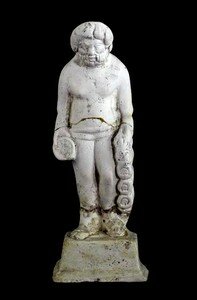 Less
further in the past, Gannat is an ancient city at the septentrional end
of the opulent plain of Limagne. Its inhabitants, who raised of the
tribe of Avernes, took share with the fight of Vercingétorix against
César. The City was located then at the site of the Saint-Etienne
church. Pagan temple set up at this place, it remains remains of
columns and the very beautiful statue of Sucellus God (visible with the
Machelon Museum). From the year thousand, Gannat is transported to the
current site of the city.
Less
further in the past, Gannat is an ancient city at the septentrional end
of the opulent plain of Limagne. Its inhabitants, who raised of the
tribe of Avernes, took share with the fight of Vercingétorix against
César. The City was located then at the site of the Saint-Etienne
church. Pagan temple set up at this place, it remains remains of
columns and the very beautiful statue of Sucellus God (visible with the
Machelon Museum). From the year thousand, Gannat is transported to the
current site of the city.
The church Holy-Cross of Gannat
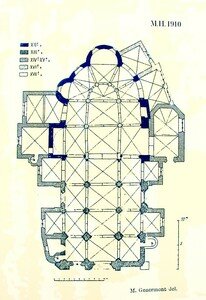 The
parish of Gannat depended on the old diocese of Clermont. Romance
building remain both chapellles radiant, some elements of the bedside
as well as the northern arms of the transept. The rehandlings will
follow one another until the XVIIIème century.
The
parish of Gannat depended on the old diocese of Clermont. Romance
building remain both chapellles radiant, some elements of the bedside
as well as the northern arms of the transept. The rehandlings will
follow one another until the XVIIIème century.
 In
XIIIème century, the three spans of the nave and sides, preceded by a
porch, were built. Of XIVème in XVIème century, ten vaults of irregular
plans were coupled without order against the gouttereaux walls and the
bedside. The nave and the sides consituent an interesting whole of the
end of XIIIème century, in particular by the presence of a false
triforium to the top of the sides.
In
XIIIème century, the three spans of the nave and sides, preceded by a
porch, were built. Of XIVème in XVIème century, ten vaults of irregular
plans were coupled without order against the gouttereaux walls and the
bedside. The nave and the sides consituent an interesting whole of the
end of XIIIème century, in particular by the presence of a false
triforium to the top of the sides.
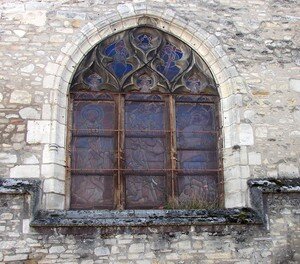 The
Gothic door “of Faulconnière”, located at the south, gives access to
the vault rested by the Filhol family, from which the lords owner from
the castle close to Gannat come. The blazon decorates the tympanum.
The
Gothic door “of Faulconnière”, located at the south, gives access to
the vault rested by the Filhol family, from which the lords owner from
the castle close to Gannat come. The blazon decorates the tympanum.
On the Romance part of the bedside, by fragments, a cord of palmettes is still seen which circumvented the clotheshangers of windows. One of the colones shouldering the apse is surmounted by a capital of the nativity.
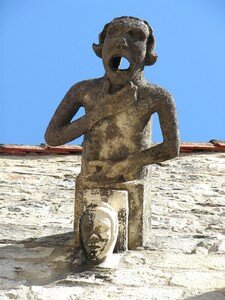 The
church only appears today on the bottom of the place. It always was not
thus. Two thirds of this place were occupied by markets which one
planned to dismount about 1830. A building advanced to the central gate
sparing a narrow lane between the church and him, dominated by the
waste-gas main known as Bade-throat which, the days of rain, poured
water of roof on the imprudent passer by. Right before the
north-western angle some parasitic constructions rested against the
wall of the church. In the North-East, there was a cemetery which one
débarassé oneself with the revolution. The Romance part can be dated
from XIIème and XIIème centuries and the Gothic part of XIIIème in
XVème century.
The
church only appears today on the bottom of the place. It always was not
thus. Two thirds of this place were occupied by markets which one
planned to dismount about 1830. A building advanced to the central gate
sparing a narrow lane between the church and him, dominated by the
waste-gas main known as Bade-throat which, the days of rain, poured
water of roof on the imprudent passer by. Right before the
north-western angle some parasitic constructions rested against the
wall of the church. In the North-East, there was a cemetery which one
débarassé oneself with the revolution. The Romance part can be dated
from XIIème and XIIème centuries and the Gothic part of XIIIème in
XVème century.
Bell-towers
 The
Western frontage, of XIIIème century, is bored of a gate whose tympanum
is decorated of a trefoil arch, surmounted of a gable.
The
Western frontage, of XIIIème century, is bored of a gate whose tympanum
is decorated of a trefoil arch, surmounted of a gable.
The two
bell-towers make balance around the central gate between the gross
tower in the south-west which contains the bells and what was a
bell-tower before being levelled with the revolution. The starting
points of the one and the other are similar, except that the
south-western tower was altered, thickened, consolidated between 1659
and 1665. The current bell-tower, high of approximately 30m, contains
the “Lead one”, bell which weighs 1.100 kg. It was high above the first
span of the southern side at the XVIIIème century.
The Western gate
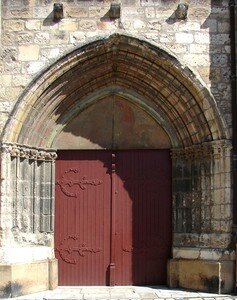 It
is offered to the sight as soon as one puts the foot on the place. The
toric curves of its archivolt were pressed on posts with the capitals
decorated with hooks. In the throats which separate them are carved not
easily readable reasons. The tympanum leaves apparaitre a head of
painted Christ since disappeared, in June 1942, the plaster coating
which carried the inscription “the French people reconnait to be to it
suprème and the immortality of the heart”. In 1881 the large current
doors replaced the antiques doors with mullions and panels. One does
not know by which juggling act the two old ventails were found in
London in Victoria and Albert museum.
It
is offered to the sight as soon as one puts the foot on the place. The
toric curves of its archivolt were pressed on posts with the capitals
decorated with hooks. In the throats which separate them are carved not
easily readable reasons. The tympanum leaves apparaitre a head of
painted Christ since disappeared, in June 1942, the plaster coating
which carried the inscription “the French people reconnait to be to it
suprème and the immortality of the heart”. In 1881 the large current
doors replaced the antiques doors with mullions and panels. One does
not know by which juggling act the two old ventails were found in
London in Victoria and Albert museum.
Side doors
 While
passing to the south, the gate with its doors with box offers a
particularly neat decoration. Two channels allowed the rain water
run-off are finished by the head of a fantastic animal that some
identified with the vouivre. These channels indicate the limit of the
primitive construction deformed by the addition to various dates of the
side chapels.
While
passing to the south, the gate with its doors with box offers a
particularly neat decoration. Two channels allowed the rain water
run-off are finished by the head of a fantastic animal that some
identified with the vouivre. These channels indicate the limit of the
primitive construction deformed by the addition to various dates of the
side chapels.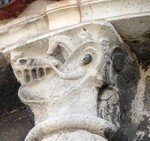
The Romance apse
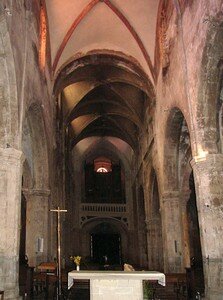 The
apsidal chapel in beautiful apparatus is turned towards the east. It is
known as vault of Holy Procule, owner of Gannat and introduced in a
stained glass. By circumventing it, one meets the northern absidiole
which had its during in the south?. On one of the external capitals,
birth known Christ. The northern door is treated with sobriety. The
baptismal funds, were closed on the right in a wall cupboard with the
painted doors.
The
apsidal chapel in beautiful apparatus is turned towards the east. It is
known as vault of Holy Procule, owner of Gannat and introduced in a
stained glass. By circumventing it, one meets the northern absidiole
which had its during in the south?. On one of the external capitals,
birth known Christ. The northern door is treated with sobriety. The
baptismal funds, were closed on the right in a wall cupboard with the
painted doors.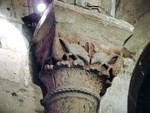
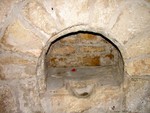
The great nave and chorus
 Supported
against the large gate one appreciates the width of the building and
the ribbed vaults by distionguant the 4 spans of the nave, the
presbytery on the level of the transept, the chorus and the apsidal
chapel.
Supported
against the large gate one appreciates the width of the building and
the ribbed vaults by distionguant the 4 spans of the nave, the
presbytery on the level of the transept, the chorus and the apsidal
chapel.
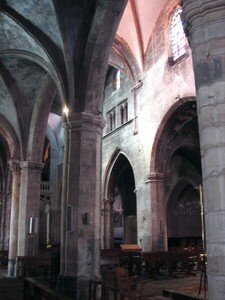 The
length of the building is of 43,50m and the width of 15m. Before chorus
étaitr reserved with the priests communamists having 48 stalls, alas
dismounted and laid out in the museum. The grids going up with the
construction of the building closed it and were surmounted by a
platform or jubé removed in 1790.
The
length of the building is of 43,50m and the width of 15m. Before chorus
étaitr reserved with the priests communamists having 48 stalls, alas
dismounted and laid out in the museum. The grids going up with the
construction of the building closed it and were surmounted by a
platform or jubé removed in 1790. 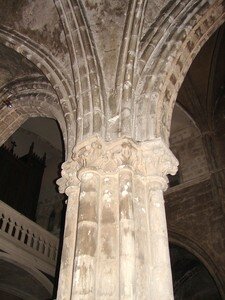
The déambulatoire Privativement
called carole, it continues the sides by making the turn of the chorus.
It served 3 radiating chapels of which only one remained. Romance
church, it remains to us the pillars extéreiurs passage surmounted by
capitals with beautiful geometrical, floral or animal ornamentations,
and some human characters appearing of the telamones, put aside the
figurative capital representing the fall of Adam and Eve to the
terrestrial paradise.
Privativement
called carole, it continues the sides by making the turn of the chorus.
It served 3 radiating chapels of which only one remained. Romance
church, it remains to us the pillars extéreiurs passage surmounted by
capitals with beautiful geometrical, floral or animal ornamentations,
and some human characters appearing of the telamones, put aside the
figurative capital representing the fall of Adam and Eve to the
terrestrial paradise.
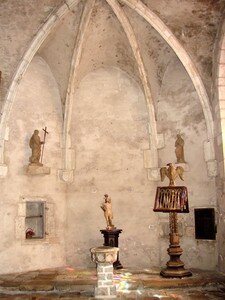 The évangéliaires are kept with the museum Yves Machelon. (évangéliaire Carolingian of IXème century, another of XIIème.)
The évangéliaires are kept with the museum Yves Machelon. (évangéliaire Carolingian of IXème century, another of XIIème.)
Capitals
 centered on alchemy, interior and external…
centered on alchemy, interior and external…
We have the labyrinth, as well as the royal way, the way of the medium, and the tree of science…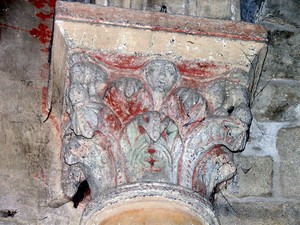

/https%3A%2F%2Fprofilepics.canalblog.com%2Fprofilepics%2F1%2F1%2F116167.jpg)
/https%3A%2F%2Fstorage.canalblog.com%2F49%2F16%2F312499%2F14620054_o.jpg)
/https%3A%2F%2Fstorage.canalblog.com%2F53%2F18%2F312499%2F14151229_o.jpg)
/https%3A%2F%2Fstorage.canalblog.com%2F07%2F05%2F312499%2F14149867_o.jpg)
/https%3A%2F%2Fstorage.canalblog.com%2F11%2F35%2F312499%2F14149307_o.jpg)
/https%3A%2F%2Fstorage.canalblog.com%2F90%2F14%2F312499%2F14125247_o.jpg)
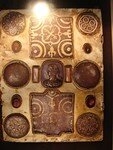
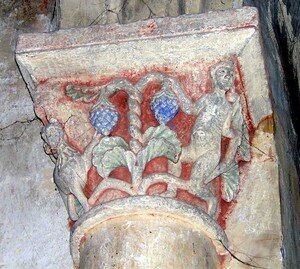
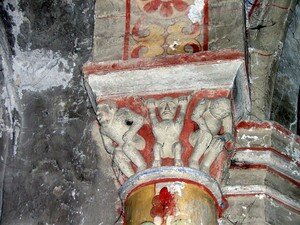


/https%3A%2F%2Fstorage.canalblog.com%2F12%2F98%2F137895%2F6624411_p.jpg)
/https%3A%2F%2Fstorage.canalblog.com%2F34%2F82%2F137895%2F27207854_p.jpg)
/https%3A%2F%2Fstorage.canalblog.com%2F32%2F37%2F137895%2F15872299_p.jpg)
/https%3A%2F%2Fstorage.canalblog.com%2F37%2F81%2F137895%2F15879822_p.jpg)